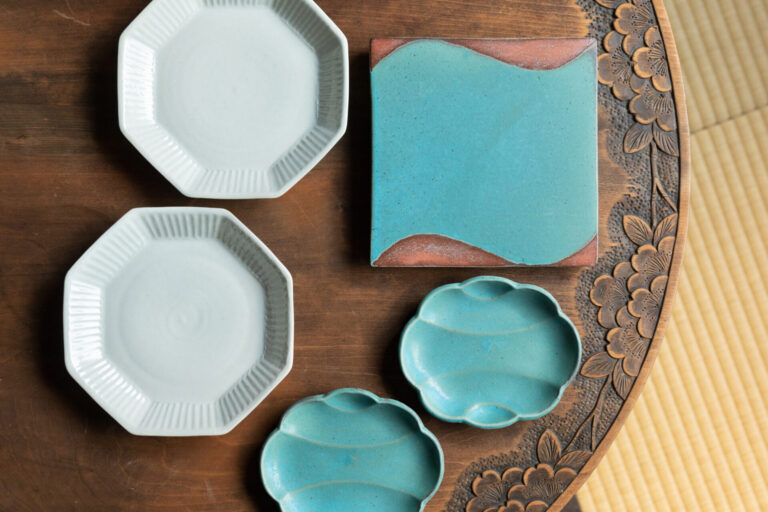
The blue colors of the Uoun Kiln by Taro Yamamoto / Utsu...
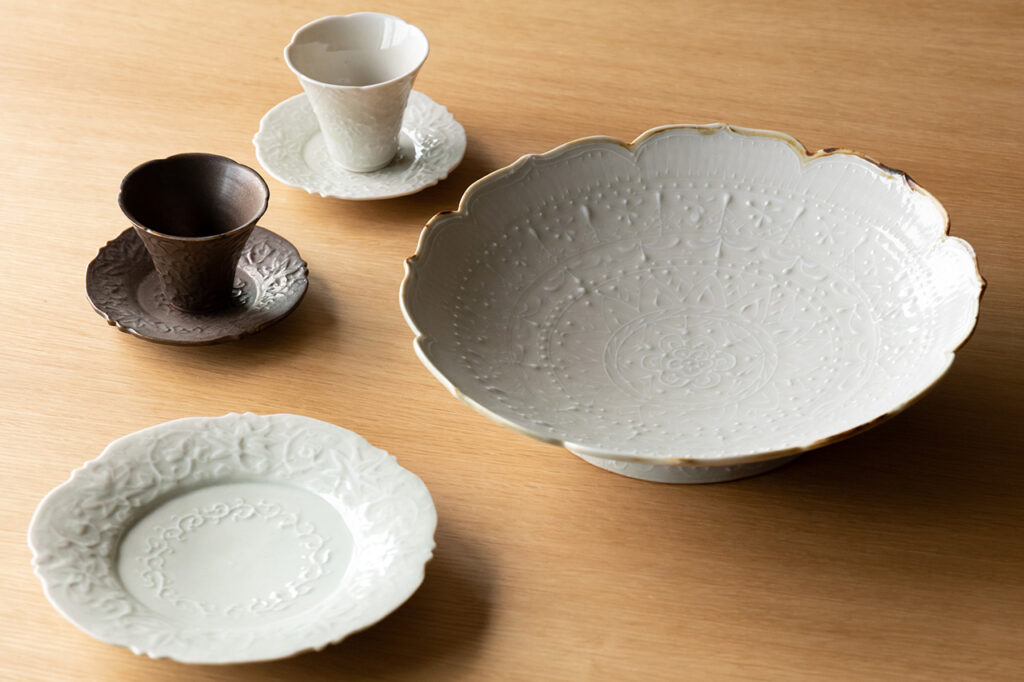

This month's issue focuses on Kyoto-based craftspeople and introduces their thoughts and works. In this issue, we introduce Ms. Asami Maeda, who creates works using a wide range of techniques, including hittsukomi (hammering), itchin, and tsukemono. Her vessels have a presence that makes you want to display them.
Asami Maeda's first encounter with ceramics was as a student. She was studying to become a philosophy researcher at a graduate school in Kyoto when she was introduced to ceramics at a pottery class. Maeda, who had always been interested in art, including attending art school in the past, was fascinated by the profound world of ceramics.
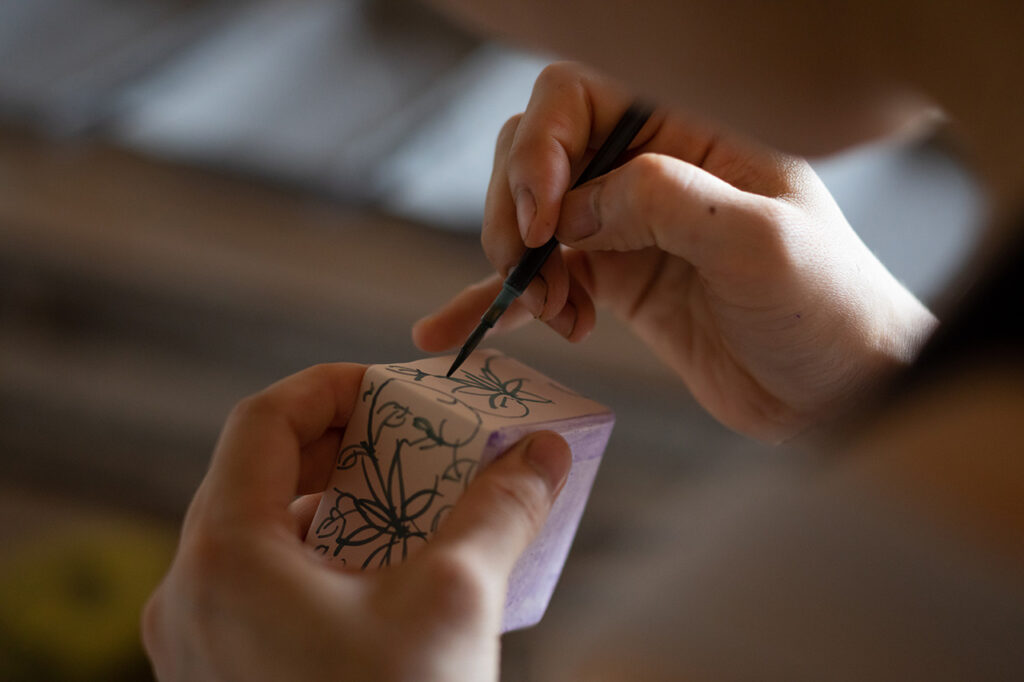

I thought it was interesting that the method was so scientific. I thought the method was scientific and interesting. Since the materials are derived from nature, the amount of iron and water content varies little by little, which also affects the baking time and degree of baking. It is a world of unknowns until the firing is finished, but I feel great joy when it is done well," he says. After graduating from graduate school, he spent about four years training at a kiln in Kyoto and with ceramic artists before setting up his own business in 2017. Currently, he spends his days at his home and studio on a hill from which he can see Mount Hiei.
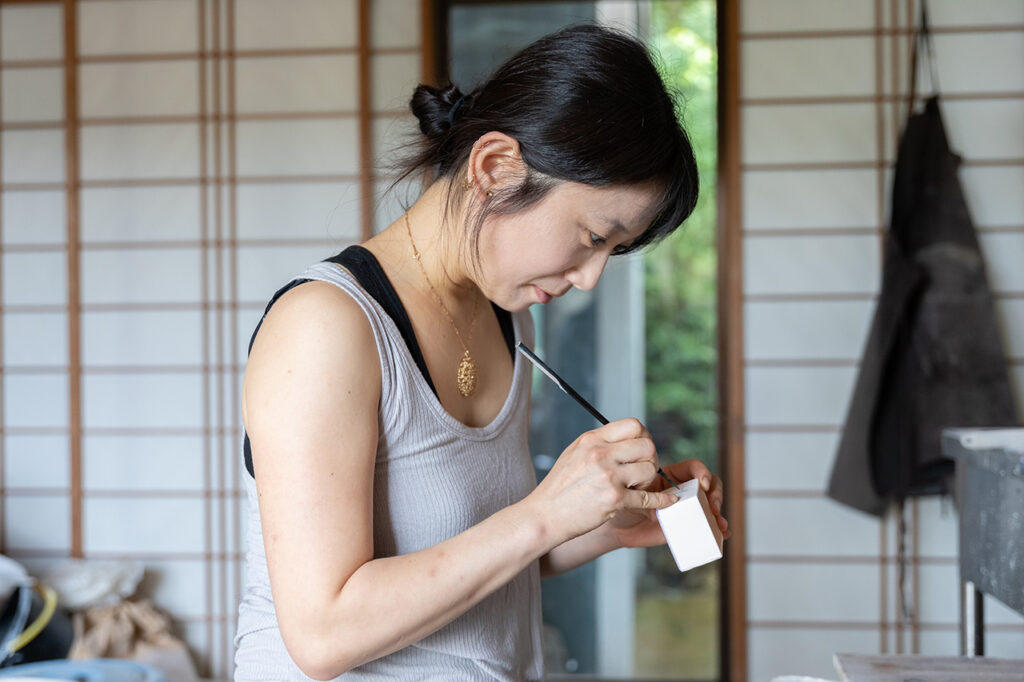

Maeda's work is synonymous with flower motifs. The fine lace-like patterns on her vessels give them a Western tableware look. I like things from the natural world, so I use flowers and other plants as motifs. A vessel is completed when it is served, but I thought it could be completed even before it is served. I am happy when my little daughter says how cute and nice the flower dishes are," says the mother of two.

From the front, a blue-and-white porcelain 5" dish with arabesque ridge flowers in an exquisite shade of bluish white, 3,960 yen. The grayish-blue glazed ichin large dish, 15,400 yen, with a glaze that is easily applied evenly to accentuate the pattern, has a powerful ichin inside. The gray-blue glazed floral cloisonne cup with a chic bronze color and antique-like texture is bronze-glazed, 3,300 yen, and the blue-and-white porcelain floral arabesque ridge-and-flower bean dish, bronze-glazed, 2,640 yen. The grayish-blue glazed floral cloisonne cup, which can be used for various occasions such as tea and sake, 3,300 yen, and the blue and white porcelain floral arabesque ridge flower bean dish with a Western-style design on the rim, 2,640 yen.

The uneven patterns on the vessels are the result of two techniques. The inside of the vessel is patterned using a technique called huchikomi, in which a mold is placed on the fabric. The mold is made by firing porcelain clay. The pattern is reflected backwards, so I have to be very imaginative and careful," he says. Since the uchikomi technique can only be used for the inside of the vessel, another technique, itching with a dropper, is used for the outside.
I am better suited to work without calculating patterns and shapes, so I do not make preliminary sketches, but just follow my feelings," he says. The delicate, carved-like patterns created by the hammering and the itching patterns that resemble drops of water. The combination of this with the calculated original glaze seems to complete the unique and beautiful expression of the vessels.
Recently, he has been focusing on a series using the Sometsuke technique. The patterns drawn in blue on a white background have a somewhat rustic atmosphere.
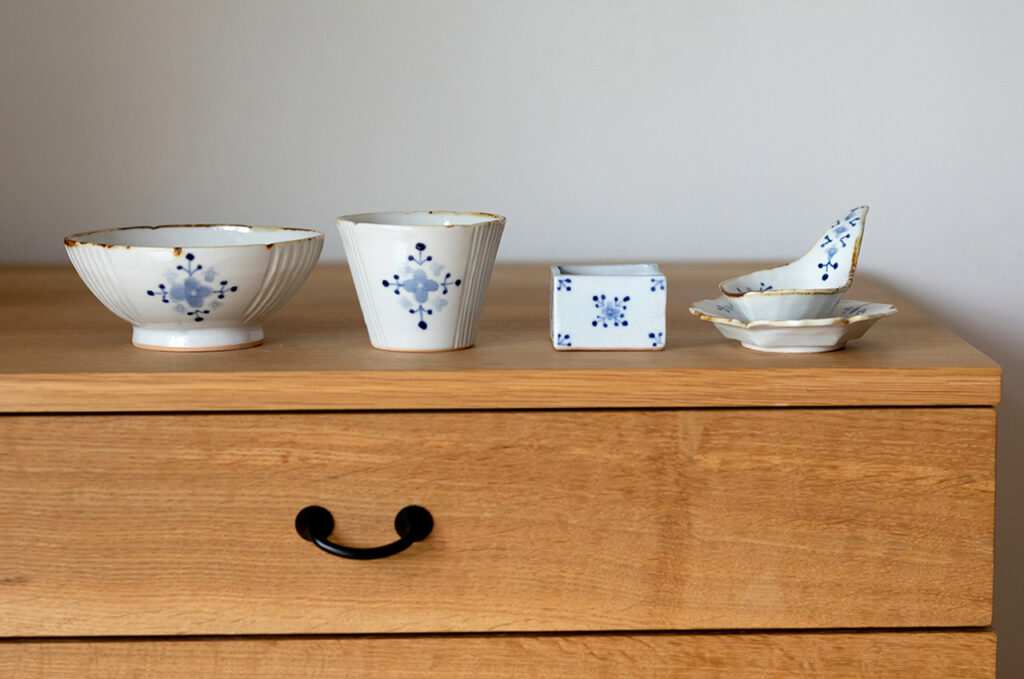
All utsuwa are painted with Kuresu underglaze pigments on unglazed cloth and baked. From left, a bowl with a floral motif in underglaze blue with a border decorated with a valve pattern adds depth of flavor, 3,960 yen. A soba inokuchi (buckwheat noodle bowl) with a floral pattern in underglaze blue, which also accentuates the shinin side of the bowl, is 3,520 yen. The small floral motifs in underglaze blue and white, which can also be used to serve condiments and other items in a cute way, is available for 3,520 yen. The lotus flower with a small floral pattern in underglaze blue can also be used as a bowl. A small floral pattern with a high rim gives a three-dimensional impression.

It also has a ceramic flavor reminiscent of Dutch Delft ware. I like to use various techniques, so I hope to work with different techniques in the future. I would also like to make objects of art. He plans to continue to hold solo and special exhibitions with great enthusiasm. We look forward to seeing his new works.
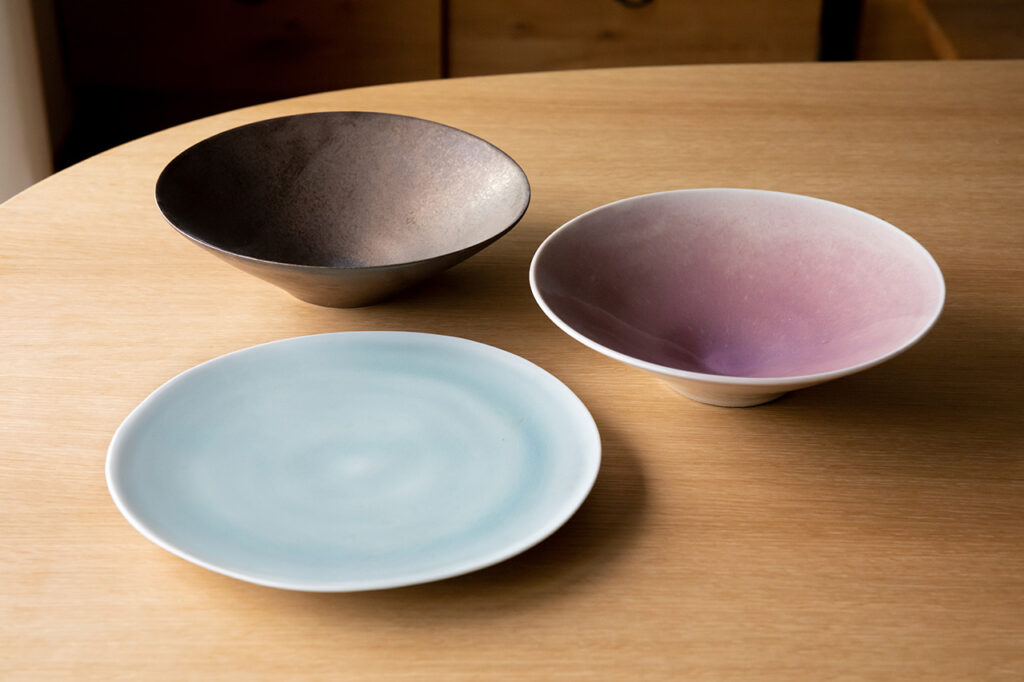
(center) A 7" hydrangea glazed bowl with a purple coloring, which is rare among glazes, costs 6,160 yen. The center of the bowl is darkened by double glazing to give it a rich expression. (foreground) A blue hydrangea glazed 8" plate dish for 6,600 yen, with an elegant blue hue that accentuates the food. (back) The bronze-glazed 7" bowl with an atmospheric appearance that looks like copper to the untrained eye costs 6,160 yen.

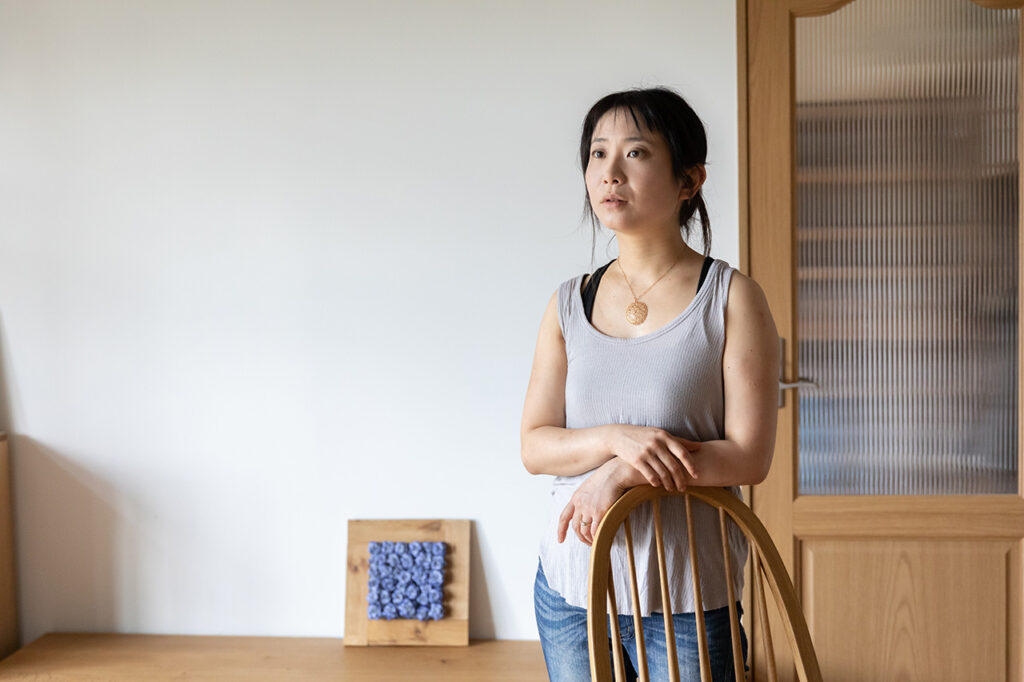

Mami Maeda
Asami Maeida
Born in Tokyo in 1988 and raised in Tokyo. After studying philosophy at a graduate school in Kyoto, he went on to become a ceramic artist. [He will hold an exhibition at M KYOTO CAFE by Leaf from November 1 to December 31, 2022, and at GOOD NATURE STATION from November 16 to December 15, 2022.
https://www.instagram.com/maedasami/
PHOTO/Takahiro Takami, TEXT/Eiko Itakura
Over 600 interviews per year! An order site carefully selected by the editors who knows Kyoto and Shiga.
nowOfficial LINE friend registration500 yen OFF coupon is being issued!
Distributed every Friday morning at 8:00 am! From new restaurant information to event information that we want to share with you, We deliver articles about Kyoto that are useful to know. About 20,000 people have registered.Click here to add a friend!
 News
News Feature article
Feature article Featured event
Featured event